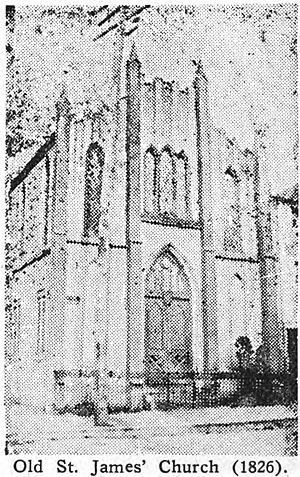William Levington facts for kids
Quick facts for kids
William Levington
|
|
|---|---|
| Born | 1793 New York City, United States
|
| Died | May 1836 (aged 42–43) |
| Occupation | Clergyman |
William Levington (born 1793 – died May 15, 1836) was an African-American religious leader and teacher. He was the third African American to become a priest in the Episcopal Church in the United States. He started the first African-American church south of the Mason–Dixon line. He also worked hard to educate young African Americans.
Early Life and Education
William Levington was born in New York City. By the age of seven, he lived in Philadelphia and worked in a bookstore. There, he met Alonzo Potter, who later became an important bishop.
Levington wanted to become a minister. He studied with Alonzo Potter from 1818 to 1822. During this time, Levington also lived and taught at a school for African American children in Albany, New York.
After his studies, Levington returned to Philadelphia. He prepared for his ordination under the guidance of Reverend Jackson Kemper. However, the bishop in New York refused to make him a priest. This was partly because Levington spoke out against slavery.
Starting a New Church
On March 14, 1824, Bishop William White ordained Levington as a deacon. This ceremony took place at the African Episcopal Church of St. Thomas in Philadelphia.
Soon after, Levington moved to Baltimore. On June 23, 1824, he founded the St. James First African Protestant Episcopal Church. He also started a school there. At that time, Maryland laws did not allow African American children to attend public schools.
The next year, people donated land and bricks to build a new church. Bishop James Kemp dedicated the new building on March 23, 1827.
A Priest and a Leader
On March 23, 1828, Bishop White ordained Levington as a priest in Philadelphia. This was a big step for him.
Levington faced challenges in his new church. He insisted that all members, whether free or enslaved, should have the same rights. The church was officially recognized by Maryland's government in 1829.
For several years, Levington traveled to northern states to raise money. He needed funds to pay for the church's construction and his own salary. This was because the Episcopal Church did not fully fund missionaries back then.
Levington was also a strong voice against slavery. He also spoke out against the American Colonization Society. This group wanted to send free African Americans to Africa.
His Legacy
William Levington passed away on May 15, 1836. He was buried in Old Bethel African Cemetery.
His church, St. James, continued to grow and move to new locations. Today, it still honors its founder, William Levington.
Levington's work had a lasting impact. William Douglass, one of his students, became an important Episcopal minister. He led the historic St. Thomas Church in Philadelphia. Levington also taught the mother of Bishop Levi Coppin, a key figure in the African Methodist Episcopal Church. Coppin State University in Maryland is named after Bishop Coppin's wife, Fanny Jackson Coppin.
An embroidered sampler that Levington gave to a donor in 1832 is now displayed at the DeWitt Wallace Decorative Arts Museum in Williamsburg, Virginia.


